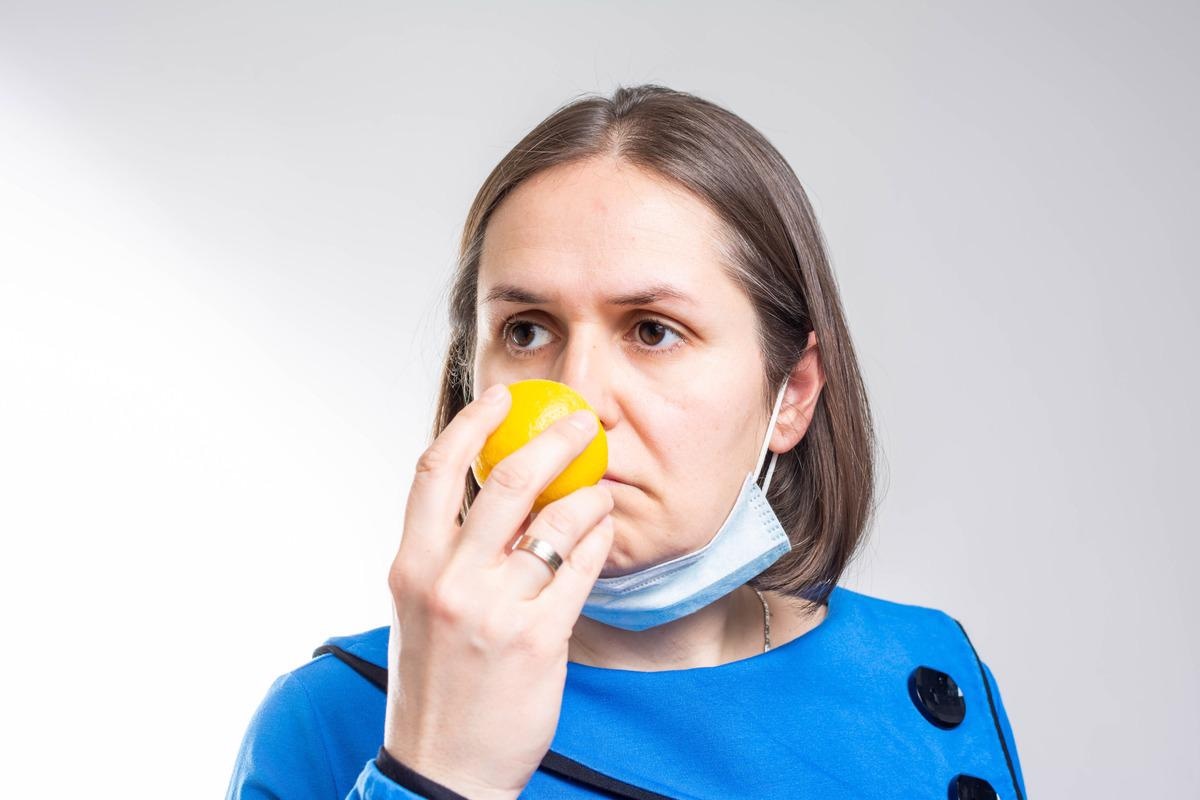To date, 351 million individuals have been infected by severe acute respiratory syndrome coronavirus-2 (SARS-CoV-2), the causal agent of the coronavirus disease-2019 (COVID-19) pandemic. SARS-CoV-2, which belongs to the family Coronaviridae, has been characterized to be highly contagious and virulent.
 Study: High prevalence of olfactory disorders 18 months after contracting COVID-19. Image Credit: Nenad Cavoski/Shutterstock
Study: High prevalence of olfactory disorders 18 months after contracting COVID-19. Image Credit: Nenad Cavoski/Shutterstock
Background

 *Important notice: medRxiv publishes preliminary scientific reports that are not peer-reviewed and, therefore, should not be regarded as conclusive, guide clinical practice/health-related behavior, or treated as established information.
*Important notice: medRxiv publishes preliminary scientific reports that are not peer-reviewed and, therefore, should not be regarded as conclusive, guide clinical practice/health-related behavior, or treated as established information.
One of the common symptoms related to COVID-19 is olfactory dysfunction (OD). OD can be described as the inability to smell (anosmia), partially smell (hyposmia) during sniffing, or taste while eating. According to some previous reports, 50% of COVID-19 patients suffered from anosmia and 20% from hyposmia.
Additionally, a few COVID-19 patients also experienced parosmia. Scientists have reported that OD is connected with other health issues such as depression and weight gain. One of the important questions that have been raised is whether OD, after COVID-19 infection, is a transient or persistent problem.
Earlier research has indicated that OD could persist beyond seven months. One of the limitations of these studies is that it depends on the data provided by the participants. Other limitations include employing candidates with pre-existing OD and lacking a control group. In a new study published on the medRxiv* preprint server, scientists focused on determining the prevalence of OD eighteen months after COVID-19 infection.
A new study
The study cohort in the current study consisted of participants from the ongoing community study that included healthcare workers from the Danderyd Hospital, Stockholm. All the participants were tested for SARS-CoV-2 IgG antibodies every four months since the pandemic began in Sweden.
Scientists identified a total of 320 healthcare workers with SARS-CoV-2 IgG antibodies. Among this group, ninety-eight individuals volunteered, whose average age was forty-seven, with a history of COVID-19 infection, to provide samples to researchers. All the ninety-eight participants experienced mild COVID-19 symptoms. To reduce the possibility of obtaining biased results, all individuals were invited, among which forty-one individuals were identified to have suffered from OD after COVID-19 infection. The mean age of these participants was 50 years.
Olfactory functions were evaluated using the Sniffin' Sticks method. The threshold, discrimination, and identification (TDI) scores were recorded, which provided insights into individuals' olfactory function. A TDI score of ≥30.75 indicated normosmia, scores between 16.25 and 30.5 represented hyposmia, and scores ≤16.0 indicated anosmia.
Researchers evaluated gustatory performance using a whole-mouth spray test of five taste qualities. In this investigation, a score of ≤3 represented hypogeusia, and a score of 4 determined parosmia. Nasal problems and other associated problems were determined using the SNOT22 questionnaire.
Main results
Scientists reported the prevalence of olfactory loss after one and half years of contracting COVID-19 infection. This study cohort consisted of 4% of individuals with anosmia and 33% with hyposmia. 20% of individuals were marginally below the hyposmia cut-off value.
SNOT22 test confirmed that individuals with COVID-19 infection experienced more nasal discomfort than the control group. Gustatory testing also revealed that 3% of the COVID-19 patients experienced hypogeusia; however, no prevalence of hypogeusia was found in the control group. Interestingly, the overlap between OD and parosmia in the study cohort was small.
Conclusion
The authors reported the prevalence of smell and taste disorders, among a third (65%) of all SARS-CoV-2 IgG positive individuals, eighteen months after recovering from COVID-19 infection. They observed that 49% of individuals in this study cohort experienced parosmia. The current study indicated that these dysfunctions are persistent and may even be permanent in many COVID-19 recovered individuals.

 *Important notice: medRxiv publishes preliminary scientific reports that are not peer-reviewed and, therefore, should not be regarded as conclusive, guide clinical practice/health-related behavior, or treated as established information.
*Important notice: medRxiv publishes preliminary scientific reports that are not peer-reviewed and, therefore, should not be regarded as conclusive, guide clinical practice/health-related behavior, or treated as established information.